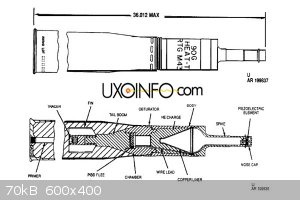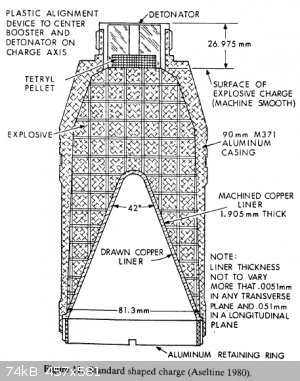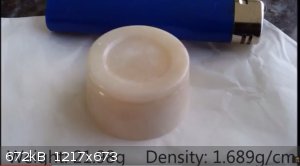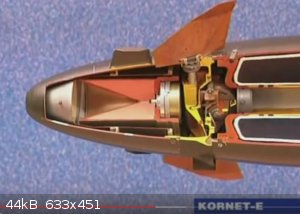| Pages:
1
..
53
54
55
56
57
..
68 |
greenlight
National Hazard
   
Posts: 705
Registered: 3-11-2014
Member Is Offline
Mood: Energetic
|
|
The PE I make with the PETN should not have a low detonation velocity. I only use about 15% binder/plasticizer and end up with a product with density
1.4-1.43.
PETN at this density should have a VOD of about 7000 m/s accodring to Explosives Engineering by Cooper. Take of course a bit of velocit for the inert
binders present.
It works beautifully with explosively formed penetrators, it seems conical shaped charges are a bit more touchy with the design and loading.
If by primer you mean detonator, it is a small diameter aluminum tube with 600mg pressed PETN and 200mg primary pressed on top with a small amount of
ball-milled black powder on top of that to ensure ignition.
I could try the PETN/NG but the NG headaches put me off.
The only use for an atomic bomb is to keep somebody else from using one.
George Wald
|
|
|
ecos
Hazard to Others
  
Posts: 464
Registered: 6-3-2014
Member Is Offline
Mood: Learning !
|
|
I also have headache when i deal with NG but a strong coffee should fix it.
Shaped charges need at least 6500 m/s VoD to work fine. I am sure that PETN and NG would be more than sufficient. NG will fill the air gaps and you
won't need to press very hard as you did before.
Good luck and waiting for your results 
|
|
|
greenlight
National Hazard
   
Posts: 705
Registered: 3-11-2014
Member Is Offline
Mood: Energetic
|
|
The PETN is pushing a little over 7000m/s so that would be efficient in SC but I might stock up on the coffee and make a batch of NG if I come across
any more copper cones
[Edited on 21-11-2015 by greenlight]
The only use for an atomic bomb is to keep somebody else from using one.
George Wald
|
|
|
Fulmen
International Hazard
    
Posts: 1693
Registered: 24-9-2005
Member Is Offline
Mood: Bored
|
|
Coffee and nicotine works OK for countering the effects of NG. I helped a friend expand his basement and this required repacking dynamite into 20mm
plastic tubes. After he spent an entire night listening to the pounding of his heart he left that bit to me, personally I think the rush is almost
fun. But I always prepared by hitting the coffee hard, so that might be why I didn't react as much.
Personally I don't see the need for pushing the envelope when it comes to the explosives, plastic PETN is more than sufficient for SC as long as the
charge is properly made. The challenge seems to be getting consistent results.
We're not banging rocks together here. We know how to put a man back together.
|
|
|
PHILOU Zrealone
International Hazard
    
Posts: 2893
Registered: 20-5-2002
Location: Brussel
Member Is Offline
Mood: Bis-diazo-dinitro-hydroquinonic
|
|
Quote: Originally posted by greenlight  | The PETN is pushing a little over 7000m/s so that would be efficient in SC but I might stock up on the coffee and make a batch of NG if I come across
any more copper cones
|
PETN is listed with a VOD of 8400 m/s confined at 1.70 g/ccm (while its max density can go as high as 1.76...so actual VOD at max density and
confinement is higher than 8400 m/s --> 8700m/s.
NG has a density of 1.591 g/ccm and its VOD confined at 1.59g/ccm is 7600 m/s.
The mix of the two will be beneficial to both explosives since PETN has a negative OB (thus some fuel remains unburned and full power is not reached)
while NG has a positive OB (thus some oxygen is set free without being used to burn molecular fuel).
The optimum zero OB mix should thus diplay optimal use of the inerant fuel and oxydiser and should perform better (better energy output)...but adding
NG to PETN will also reduce a bit the overal density what may compete in the expression of the VOD.
--> Better use than closer density compounds like ETN or MHN with PETN.
Then zero OB mix will be no doubt the more powerful one.
[Edited on 22-11-2015 by PHILOU Zrealone]
PH Z (PHILOU Zrealone)
"Physic is all what never works; Chemistry is all what stinks and explodes!"-"Life that deadly disease, sexually transmitted."(W.Allen)
|
|
|
ecos
Hazard to Others
  
Posts: 464
Registered: 6-3-2014
Member Is Offline
Mood: Learning !
|
|
MHN (Mannitol hexanitrate) is sensitive !! please avoid it
ETN would be very good solution but what about perchlorate+PETN?
|
|
|
pm1306
Harmless

Posts: 3
Registered: 21-11-2015
Member Is Offline
Mood: No Mood
|
|
Has anyone tried firing an EFP through a (plastic) container of gasoline or kerosene from a distance? The friction of the copper slug passing through
the fuel at supersonic speed should generate sufficient heat to ignite it but I would be interested to know if that is true in practice.
The auto ignition temperature of gasoline is between 247 and 280 degrees according to Wikipedia. Kerosene is lower at around 210 degrees C. I would
like to know the results for both.
According to Mythbusters episode 15 a standard bullet fired through gasoline does not ignite it.
According to https://en.wikipedia.org/wiki/Shaped_charge the temperature of the jet in a standard (conical) shaped charge is over 400 degrees C which in itself
should be sufficient to ignite the fuel on contact.
Use of a plastic container would ensure that the ignition was not caused by the heat or possible spark caused by the slug hitting a steel container.
The distance should be sufficient to eliminate the ignition being caused by the explosion itself. (eg. 10m)
I would also be interested in the effect of firing from close range (eg. 300mm) so the explosion itself does ignite the fuel, possibly using ETN which
has a positive oxygen balance. (TATP would be no good as it is endothermic.) In particular I would be interested to know whether the slug disperses
the fuel sufficiently before detonation to generate a thermobaric explosion or merely a deflagration.
If possible a video of the result would be great.
(I am not into experimenting with these things myself and would prefer to leave it to those with more experience.)
|
|
|
ecos
Hazard to Others
  
Posts: 464
Registered: 6-3-2014
Member Is Offline
Mood: Learning !
|
|
Quote: Originally posted by pm1306  | Has anyone tried firing an EFP through a (plastic) container of gasoline or kerosene from a distance? The friction of the copper slug passing through
the fuel at supersonic speed should generate sufficient heat to ignite it but I would be interested to know if that is true in practice.
The auto ignition temperature of gasoline is between 247 and 280 degrees according to Wikipedia. Kerosene is lower at around 210 degrees C. I would
like to know the results for both.
According to Mythbusters episode 15 a standard bullet fired through gasoline does not ignite it.
According to https://en.wikipedia.org/wiki/Shaped_charge the temperature of the jet in a standard (conical) shaped charge is over 400 degrees C which in itself
should be sufficient to ignite the fuel on contact.
Use of a plastic container would ensure that the ignition was not caused by the heat or possible spark caused by the slug hitting a steel container.
The distance should be sufficient to eliminate the ignition being caused by the explosion itself. (eg. 10m)
I would also be interested in the effect of firing from close range (eg. 300mm) so the explosion itself does ignite the fuel, possibly using ETN which
has a positive oxygen balance. (TATP would be no good as it is endothermic.) In particular I would be interested to know whether the slug disperses
the fuel sufficiently before detonation to generate a thermobaric explosion or merely a deflagration.
If possible a video of the result would be great.
(I am not into experimenting with these things myself and would prefer to leave it to those with more experience.)
|
The bullet may not ignite the fuel because the heat transfer between bullet and fuel is very small due to the high velocity of the bullet.
|
|
|
greenlight
National Hazard
   
Posts: 705
Registered: 3-11-2014
Member Is Offline
Mood: Energetic
|
|
I don't think a copper EFP liner would ignite a container of flammable liquid when it passes through.
Earlier in the thread though I mentioned an EFP liner for the Vulcan offered by Alford technologies that was magnesium and ignites as it forms. This
means it can ignite flammable items behind thin steel (5mm) as the website says.
http://explosives.net/product/vulcan-magnesium-efp-set/
I have some 1mm thick magnesium sheet but it seems the liners linked are at least 2 mm thick compared to the copper ones. A 30mm Mg liner from 1mm
thick sheet only weighs a little over a gram
[Edited on 23-11-2015 by greenlight]
The only use for an atomic bomb is to keep somebody else from using one.
George Wald
|
|
|
pm1306
Harmless

Posts: 3
Registered: 21-11-2015
Member Is Offline
Mood: No Mood
|
|
What I am hoping is that someone can try it with a plain copper liner rather than relying on supposition. Even if the heat from the friction does not
ignite it the heat generated by the huge pressure may- much like diesel ignites in a diesel engine as a result of pressure increasing the temperature.
I realise that the fuel in the container is not confined like in an engine cylinder but then again the piston in a diesel engine does not move at
28,000 km/h.
|
|
|
Fulmen
International Hazard
    
Posts: 1693
Registered: 24-9-2005
Member Is Offline
Mood: Bored
|
|
Difference is you don't have a combustible mixture of fuel and air present. The impact will of course disperse the liquid, but by the time that
happens the projectile will be long gone.
We're not banging rocks together here. We know how to put a man back together.
|
|
|
ecos
Hazard to Others
  
Posts: 464
Registered: 6-3-2014
Member Is Offline
Mood: Learning !
|
|
nice video for shaped charges in RPG : https://www.youtube.com/watch?v=TT2t6RbVYVU
|
|
|
greenlight
National Hazard
   
Posts: 705
Registered: 3-11-2014
Member Is Offline
Mood: Energetic
|
|
Yes, I agree, fuel will just be dispersed upon impact.
I think the only way is with a Mg liner. I have a 30mm one here that weighs 1.28 grams and is 1mm thick. I might give it a go when I have some spare
explosive.
BTW, nice animation of jet formation from RPG.
The only use for an atomic bomb is to keep somebody else from using one.
George Wald
|
|
|
pm1306
Harmless

Posts: 3
Registered: 21-11-2015
Member Is Offline
Mood: No Mood
|
|
Best test would probably be kerosene as it has a lower auto-ignition temperature than gasoline. If copper doesn't work then try the magnesium.
|
|
|
ecos
Hazard to Others
  
Posts: 464
Registered: 6-3-2014
Member Is Offline
Mood: Learning !
|
|
Quote: Originally posted by greenlight  | Yes, I agree, fuel will just be dispersed upon impact.
I think the only way is with a Mg liner. I have a 30mm one here that weighs 1.28 grams and is 1mm thick. I might give it a go when I have some spare
explosive.
BTW, nice animation of jet formation from RPG. |
Mg density is very low compared to copper
what is interesting in RPG that its SC is very effective with different stand-off distances because of the falling angle and it can penetrate very
deep with few amount of EM.
in this video : https://www.youtube.com/watch?v=_J-uKNb6TaI you can see how strong it is !
I think there is a trick in the design of its shaped charge, what do u think ?
|
|
|
Bert
Super Administrator
        
Posts: 2821
Registered: 12-3-2004
Member Is Offline
Mood: " I think we are all going to die. I think that love is an illusion. We are flawed, my darling".
|
|
Rather than Mg, you might consider liners of either Zirconium or mischmetal. Both are denser, and pyrophoric under the conditions of interest here-
Working these materials requires a bit more care than Cu, of course!
Rapopart’s Rules for critical commentary:
1. Attempt to re-express your target’s position so clearly, vividly and fairly that your target says: “Thanks, I wish I’d thought of putting it
that way.”
2. List any points of agreement (especially if they are not matters of general or widespread agreement).
3. Mention anything you have learned from your target.
4. Only then are you permitted to say so much as a word of rebuttal or criticism.
Anatol Rapoport was a Russian-born American mathematical psychologist (1911-2007).
|
|
|
greenlight
National Hazard
   
Posts: 705
Registered: 3-11-2014
Member Is Offline
Mood: Energetic
|
|
@Bert, Is it possible to buy these metals like zirconium or Mischmetal in sheet form (1mm or so thick) at a reasonable price though.
@Ecos, The Mg does have a very low density and that's why I think 2mm would be a more appropriate thickness for an EFP liner.
From the information I can find quickly because I have a lack of time, the RPG7 HEAT round has 730 grams of high explosive behind it and a diameter of
93 mm. Penetration is listed at about 500mm into hard armour.
93mm diameter is actually quite a large shaped charge.
I think the "trick's" in the RPG warhead design are:
* A perfectly made and symmetrical liner from a factory and it may be a specialized shape (tulip/trumpet).
* More powerful explosive with no air gaps (HMX and wax).
* Large charge diameter and charge weight.
* Standoff is completely dialed in.
The only use for an atomic bomb is to keep somebody else from using one.
George Wald
|
|
|
ecos
Hazard to Others
  
Posts: 464
Registered: 6-3-2014
Member Is Offline
Mood: Learning !
|
|
I think RPG use TNT as EM and the liner doesn't look like cone , it has some bends in the side. The detonator is place in a deeper way.
have a look here and tell me what you see :

Most of the books talk about Pentolite(50% PETN and 50% TNT) as the most used EM for shaped charges.
|
|
|
Fulmen
International Hazard
    
Posts: 1693
Registered: 24-9-2005
Member Is Offline
Mood: Bored
|
|
Technically that's not an RPG but an HEAT-round, but the warheads are quite similar in design. The liner is called a trumpet liner and increases
penetration at short standoffs by exaggerating the velocity gradient in the penetrator. A further improvement would be spiral flutes in the liner to
counteract the rotation as this can cause premature dispersion of the penetrator.
We're not banging rocks together here. We know how to put a man back together.
|
|
|
ecos
Hazard to Others
  
Posts: 464
Registered: 6-3-2014
Member Is Offline
Mood: Learning !
|
|
Thanks for the info.
the head of the cone is not sharp angle but flat ! is this a mistake in the figures?

|
|
|
ecos
Hazard to Others
  
Posts: 464
Registered: 6-3-2014
Member Is Offline
Mood: Learning !
|
|
@Greenlight,
I think your setup is similar to this one. I see the figure use booster(Tetryl) and it has wide area. Maybe to make the wave very flat?

|
|
|
greenlight
National Hazard
   
Posts: 705
Registered: 3-11-2014
Member Is Offline
Mood: Energetic
|
|
Yes, that looks a lot like the setup that i used. the only thing is that it has a tapered top (tamper/confinement) all the way up to the
tetryl/detonator well.
It seems that the ring around the detonator is plastic or some other inert material and just functions to centre the cap. The only place where the
cap contacts actual explosive is on the bottom.
I think most likely the tetryl pellet is just there to ensure that the main charge detonates and with the maximum velocity that it is capable of.
That charge has a pretty thick liner, the illustration states it is 1.9mm thick.
[Edited on 26-11-2015 by greenlight]
The only use for an atomic bomb is to keep somebody else from using one.
George Wald
|
|
|
ecos
Hazard to Others
  
Posts: 464
Registered: 6-3-2014
Member Is Offline
Mood: Learning !
|
|
I think if you can cast PETN and ETN like this https://youtu.be/weDfp4zai3A
You would have VoD around 8240 m/s which is very powerful
It is formed by :
| Quote: |
The ETN was the binder.it was molten at 61℃ and combined with PETN in a plastic container and the molten mix was left to slowly cool and the cast
was complete. Pretty potent for its small size. |

I think melting ETN would be very dangerous process
[Edited on 2-12-2015 by ecos]
|
|
|
NeonPulse
Hazard to Others
  
Posts: 417
Registered: 29-6-2013
Location: The other end of the internet.
Member Is Offline
Mood: Isolated from Reality! For Real this time....
|
|
that looks familiar! That little puck of explosive was awesome it really struck me as to how powerful that was for such a tiny package. However mixing
it in a plastic cup was not too hard but I could see problems in getting it homogeneous in a shaped charge it actually took quit a bit of work and was
very nerve wracking. The idea came from a post by our good friend Mr Anonymous and can be found in the last few pages of threads under Mr Anonymous
melt cast ETN PETN 2-5
|
|
|
ecos
Hazard to Others
  
Posts: 464
Registered: 6-3-2014
Member Is Offline
Mood: Learning !
|
|
I was watching a video for Kornet-E : https://www.youtube.com/watch?v=bPjI1YNi4uc
I noticed it has two shaped charges. The first one destroy the active armor while the second one penetrates the shield.
The first cone doesn't have enough EM over the cone head (~1.5X). I don't think this would have enough power to convert the cone to carrot shape !

The second cone is large. There is some between the cone and the detonator that I don't know.any idea?

Its penetration power exceed 1200mm into steel  . This is massive power to be
achieved with both cones !!! . This is massive power to be
achieved with both cones !!!
where does this power came from ?

I thought the explosion of the first cone would effect the whole system but it surprise me that the second cone is able to do its work after this
explosion.
how can this happen ?
|
|
|
| Pages:
1
..
53
54
55
56
57
..
68 |